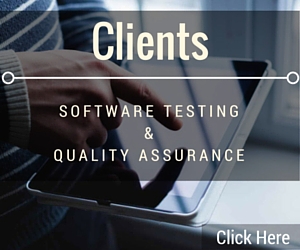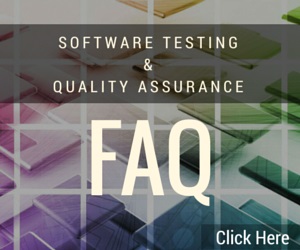While it is no longer as buzz-worthy as a few years ago, the Internet of Things (IoT) has transformed how devices, systems, and networks interact, ushering in an era where objects can communicate, collect data, and automate processes.
devices, systems, and networks interact, ushering in an era where objects can communicate, collect data, and automate processes.
With the growing number of IoT devices across industries such as healthcare, transportation, security monitoring, and smart homes, testing plays a crucial role in ensuring their functionality, security, and compatibility. This article discusses several of the key testing considerations for the myriad devices of the Internet of Things.
1. Functionality Testing
Functionality testing ensures that an IoT device performs its intended tasks accurately. This includes verifying that the device responds correctly to inputs, communicates with other devices, and processes data as expected.
Some critical aspects of functionality testing for IoT devices include:
- Data Collection and Transmission: Testing how the device collects, stores, and transmits data to ensure that data is transferred securely and without corruption. This can also include performance testing concerns such as the impact of latency on data stream integrity, and load-related issues.
- Communication Protocols: Many IoT devices use specific protocols like MQTT, HTTP, RTSP, or Bluetooth. Functionality testing should ensure that the device communicates correctly using each supported protocol.
- Error Handling: The system’s ability to handle unexpected errors or situations – such as network failure or incorrect input – should be rigorously tested to ensure the device continues operating under adverse conditions.
IoT devices often work in complex environments with a multitude of connections to different systems. Hence, extensive functionality testing is vital to confirm that each component of the device functions seamlessly.
2. Compatibility Testing
In a diverse IoT ecosystem, devices must interact with various hardware platforms, software environments, and network configurations. Compatibility testing is essential to verify that an IoT device can integrate and operate successfully across different systems and platforms. Key considerations in this testing area include:
- Operating System Compatibility: IoT devices often rely on different operating systems (e.g., Windows, Linux, Android, etc.) both to operate and to interact with their configuration software. Compatibility testing ensures these devices work consistently across all target platforms and environments.
- Device Interoperability: IoT devices rarely function in isolation – they often need to communicate with other IoT devices and cloud services, as well as with local client systems. Testing the interoperability between different devices is crucial to ensure smooth operation and communication across ecosystems.
- Network Compatibility: IoT devices can operate in diverse network environments, including Wi-Fi, 4G/5G Cellular, and low-power wide-area networks (LPWAN). Compatibility testing must evaluate how the device performs in various network conditions, ensuring uninterrupted communication and performance.
With the dauntingly vast range of possible configurations, compatibility testing becomes an ongoing process throughout the lifecycle of an IoT product, helping ensure long-term usability and integration into both existing and future infrastructure.
3. Mobile Device Testing
Since many IoT devices are controlled or monitored via mobile apps, mobile device testing is a critical consideration. Testing IoT solutions on mobile devices includes ensuring seamless integration between the app and IoT hardware, along with testing the mobile app’s performance, usability, and security.
Some important aspects of mobile device testing for IoT solutions include:
- User Interface and User Experience (UI/UX): The mobile app must offer an intuitive and responsive interface for users to control or monitor their IoT devices. Testing should focus on the UI and UX elements to ensure that the app provides a smooth and efficient user experience.
- Mobile Platform Compatibility: IoT apps must be compatible with different mobile platforms (principally iOS and Android) and multiple versions of these operating systems. Additionally, mobile device testing should cover a variety of screen sizes, resolutions, and hardware specifications to ensure consistent performance across devices.
- App-Device Communication: Testing should validate how well the app communicates with the IoT device over different networks (e.g., Wi-Fi, Bluetooth, Cellular). Smooth performance across all connectivity types, as well as during handoff between networks (for example, WiFi to Cellular transitions) is vital to a mobile app supporting IoT device interfaces.
Mobile device testing is a crucial step to ensure that users can interact with IoT devices easily and reliably via their smartphones or tablets, regardless of location.
Conclusion
Testing the Internet of Things devices involves more than just verifying basic functionality. It requires comprehensive functionality testing to ensure device performance, compatibility testing to guarantee smooth operation across platforms, and mobile device testing to validate interaction through mobile apps. As IoT ecosystems continue to grow more complex, robust and continual testing is necessary to ensure their reliability in an ever-expanding and interconnected digital world.
If you want to ensure the reliability and performance of your IoT solutions, contact Beta Breakers today.

 With Experience in Quality Assurance & Testing Desktop Software, Mobile Apps, Websites & Web Applications for Nearly 30 Years, Beta Breakers has become the Premier Software Quality Assurance Labs and Application-Testing Provider -
With Experience in Quality Assurance & Testing Desktop Software, Mobile Apps, Websites & Web Applications for Nearly 30 Years, Beta Breakers has become the Premier Software Quality Assurance Labs and Application-Testing Provider - 
